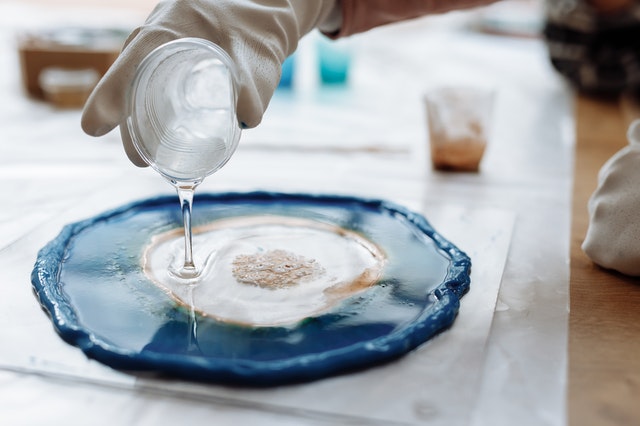
Epoxies are one of the most used substances in the world. There’s no wonder. Today epoxy resin is the most popular substance in crafting and many other industries. However, did you know different types of epoxies exist in the world? Some of them are used for glueing purposes, some are used for decoration and crafting purposes, and many other forms of epoxy resins are manufactured and used in the world. In this article, we’ve mentioned four different types of epoxy resins used in the world.
Continue reading the article:
Commercial Standard Epoxy
In most industries, a standard commercial epoxy is used. It’s recognizable by its yellowish tint, and it’s the cheapest type of epoxy compared to other forms. The ordinary epoxy is used for glueing purposes to stick two materials through this epoxy. Its yellow tint is the same as your smartphone’s silicone case that gets yellow after a few months of use.
Its yellow colour makes standard epoxy the worst form of epoxy for crafting and decorative purposes. Moreover, being low in cost and highly strong in composition and versatile makes the commercial epoxy the best industrial glue. It’s used in aerospace, automobiles, and construction industries to create an air and watertight, strong seal between the two materials.
Transparent Resin
Transparent resin is an altered form of epoxy which is highly used for decoration and crafting purposes. Fine resin is different from standard epoxy in many factors. First of all, unlike ordinary epoxy, it’s 93% transparent, and there’s no yellow tint on this epoxy.
Secondly, this epoxy generally has less drying time than standard epoxy (usually dries within 24-48 hours). Lastly, it turns out glossy in look when polished with a buffer. Due to these nature’s, transparent epoxy is more expensive than standard epoxy and covers more industries than traditional epoxy.
Table Top Epoxy
Tabletop epoxy is the same as transparent resin. However, manufacturers’ change in tabletop epoxy is to increase its transparency level and long-chain reaction. Compared to transparent epoxy, tabletop epoxy, which offers a transparency level of 93%, offers a transparency level of about 95%-97%.
Secondly, tabletop epoxies usually have a more robust composition than transparent epoxies. Because their polymers are altered to create extra-long chains when they contact the B part or cure. As a result, their density is relatively higher in reaction than transparent epoxy. All these characteristics make the tabletop epoxy perfect to be used in custom-designed resin tables.
Casting Resin
Casting epoxy resin is the same as transparent epoxy. There’s no difference between fine and casting resin. However, there’s only one big difference between them is the time of drying. In casting resins, the manufacturers use light polymers which create a long-chain reaction but not much longer as transparent epoxy. This shorter long chain reaction reduces the drying time of casting reason (usually 12-36 hours). That’s it! This is the only difference between tabletop resin and standard transparent resin.







